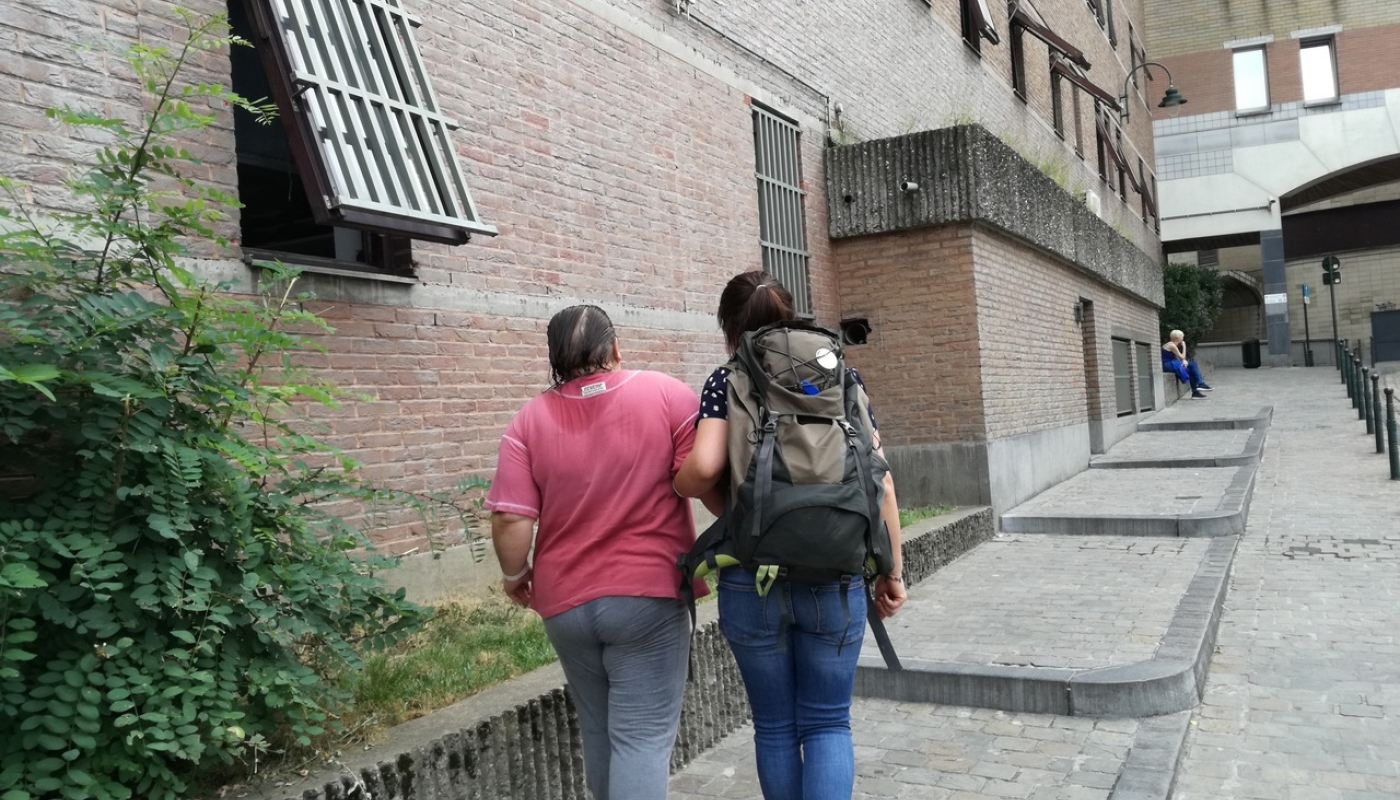She hides her face. She feels persecuted, constantly hearing threatening voices. She is in an extreme state of psychological and physical exhaustion.
Madame S. has been living on the streets for several months.
During our encounters, we occasionally see one of her blue eyes, but her face remains a mystery. She shields herself by hiding it as much as possible.
Despite the persecution she endures—some of which is imagined, though it’s clear she feels unsafe living on the streets—a connection is gradually forming. She reaches out for help in her own way, but she refuses most housing offers and hospitalizations.
Her contradictions increasingly alarm us about her mental state and her ability to make decisions for herself.
In trying to protect herself, she’s putting herself in danger.
After much thought, we decide to initiate a compulsory hospitalization procedure, taking care to ensure it is as non-confrontational as possible. With the help of a mental health professional whom Madame S. trusts, we explain our concerns, emphasizing that care has become essential. A magistrate will visit her on the streets to make the final decision.
We fear that hospitalization, perceived as an act of violence, could sever the fragile connection we’ve built, especially given the daily persecution she feels due to her condition.
In the end, Madame S. agrees to be taken to the hospital by the police. Medication quickly brings her relief, and she reports hearing far fewer voices and feeling much better. She expresses deep gratitude for the help she’s receiving.
She rests often and begins to re-establish a comforting routine.
Leaving the hospital is difficult for her at first. She expresses many desires and goals, but when we offer to accompany her outside to pursue them, she postpones, saying she'll do it later.
We understand that the outside world has become a source of stress after her long months living on the streets. We adjust to her pace and continue to encourage her without pushing too hard. Gradually, she fully reveals her face, agrees to discard the clothes she wore while homeless, and takes increasing pleasure in caring for herself.
Madame S. is eventually transferred to an open psychiatric institution to continue her recovery. Her progress is swift—she accepts going out with support, becomes proactive in handling her administrative tasks, and enjoys shopping for clothes and beauty products. She is once again grounded in reality. While she acknowledges that she still needs daily support for now, she enjoys living in the community and participating in the activities offered.
She understands that healing takes time.
Her dream is to one day travel alone in France, as she has in the past, and eventually move into her own home after leaving the hospital to regain her independence.
A remarkable journey indeed...
(*)We do our utmost to respect the privacy of our patients and our professional secrecy. However, we want to testify to how they must survive and how we are working together to reintegrate them. As a result, the names of places and people are deliberately omitted or changed and real-life situations are placed in a different context. There is no direct link between the photos and the stories above...
Your support enables our work
Mental health impasse
Mental health is one of the key elements of homelessness because it can be both the cause and the consequence of living on the street.
Read more about it in this article© picture P-Y Jotray

